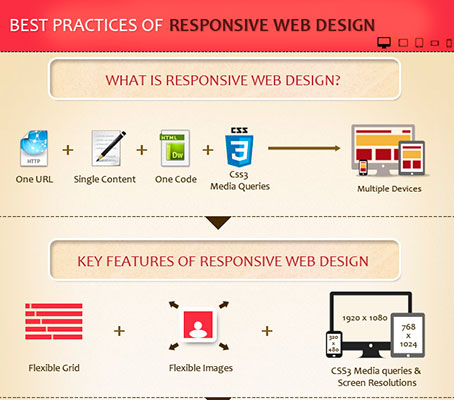Basic Elements Of Web Design: Standards For Developing A User-Centric Website
Basic Elements Of Web Design: Standards For Developing A User-Centric Website
Blog Article
Created By-Christophersen Skinner
When it pertains to website style, guaranteeing user-friendliness is crucial. From receptive layout to structured navigating, every component plays a critical role in creating a site that accommodates your audience's requirements. But what regarding the better information that can make or damage a user's browsing experience? Remain tuned as Get Source reveal some often-overlooked tips that can boost your site's use to the next degree, making it genuinely stand out in the digital landscape.
Importance of Responsive Design
Receptive design is a crucial element of contemporary site advancement. Ensuring your site is responsive methods that it can adapt to various display dimensions and tools, giving a smooth experience for users.
With the boosting use of mobile phones and tablet computers to access the web, having a receptive style is essential for getting to a bigger target market. It aids in boosting user experience by making your site simple to navigate and continue reading any kind of device.
In seo engine search , receptive design can favorably influence your search engine positions, as online search engine like Google focus on mobile-friendly sites. By having a receptive layout, you're additionally future-proofing your site, as brand-new tools with varying display dimensions continue to arise.
Simplify Navigation Structure
To enhance individual experience and assist in very easy access to details on your web site, streamlining the navigation structure is extremely important. When making your site, focus on creating a clear and intuitive navigation menu that aids visitors find what they're looking for swiftly.
Restriction the variety of menu products to the essentials, grouping relevant web pages with each other to avoid frustrating users. Usage descriptive tags that clearly indicate the material of each page, making it much easier for customers to comprehend where each web link will take them.
Think about applying dropdown food selections for subcategories to prevent littering the primary navigating bar. Additionally, consist of a search bar prominently on the web page for users who favor looking for particular info.
Focus on mobile responsiveness in your navigating layout to guarantee very easy access on all tools.
Maximize Page Load Speed
Improving web page load rate is important for keeping site visitors on your site. Slow-loading pages annoy customers and can lead to high bounce prices. To optimize page lots speed, start by optimizing pictures. Press images without jeopardizing high quality to lower their data sizes.
Additionally, enable web browser caching to store regularly accessed resources locally, quickening load times for returning site visitors. Minify CSS, JavaScript, and HTML documents by removing unnecessary personalities, remarks, and formatting, improving tons rate.
Consider making use of a material shipment network (CDN) to disperse your website's content throughout multiple servers worldwide, lowering latency for customers accessing your website from different areas. Lastly, limit making use of third-party scripts and plugins, as they can considerably affect tons times.
pop over to this web-site
To conclude, by incorporating receptive style, simplifying navigating, and optimizing page load speed, you can produce a straightforward site that interest a larger audience and improves individual experience. These essential elements guarantee that visitors can conveniently gain access to and browse your site across various tools, causing raised interaction and satisfaction. By focusing on these key elements, you can develop a successful site that maintains users returning for more.
